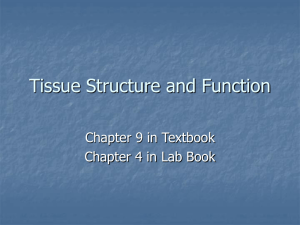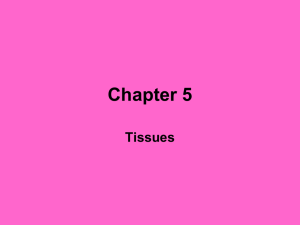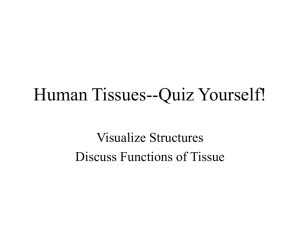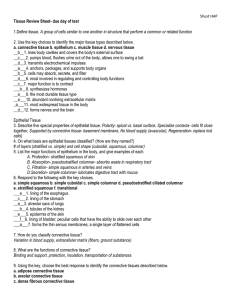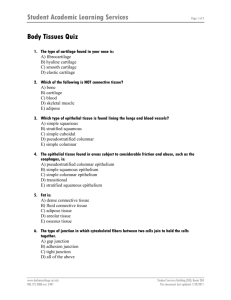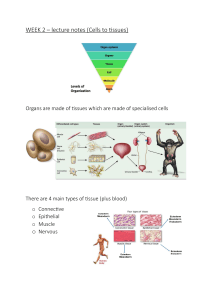TissueReview - whs
advertisement
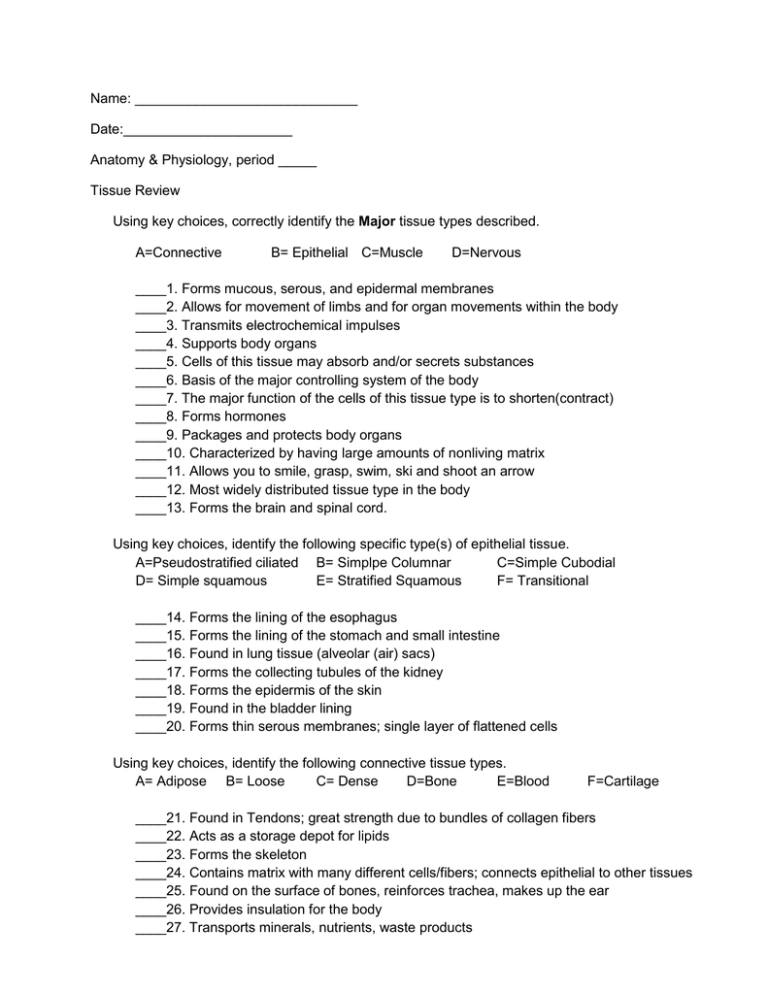
Name: _____________________________ Date:______________________ Anatomy & Physiology, period _____ Tissue Review Using key choices, correctly identify the Major tissue types described. A=Connective B= Epithelial C=Muscle D=Nervous ____1. Forms mucous, serous, and epidermal membranes ____2. Allows for movement of limbs and for organ movements within the body ____3. Transmits electrochemical impulses ____4. Supports body organs ____5. Cells of this tissue may absorb and/or secrets substances ____6. Basis of the major controlling system of the body ____7. The major function of the cells of this tissue type is to shorten(contract) ____8. Forms hormones ____9. Packages and protects body organs ____10. Characterized by having large amounts of nonliving matrix ____11. Allows you to smile, grasp, swim, ski and shoot an arrow ____12. Most widely distributed tissue type in the body ____13. Forms the brain and spinal cord. Using key choices, identify the following specific type(s) of epithelial tissue. A=Pseudostratified ciliated B= Simplpe Columnar C=Simple Cubodial D= Simple squamous E= Stratified Squamous F= Transitional ____14. Forms the lining of the esophagus ____15. Forms the lining of the stomach and small intestine ____16. Found in lung tissue (alveolar (air) sacs) ____17. Forms the collecting tubules of the kidney ____18. Forms the epidermis of the skin ____19. Found in the bladder lining ____20. Forms thin serous membranes; single layer of flattened cells Using key choices, identify the following connective tissue types. A= Adipose B= Loose C= Dense D=Bone E=Blood F=Cartilage ____21. Found in Tendons; great strength due to bundles of collagen fibers ____22. Acts as a storage depot for lipids ____23. Forms the skeleton ____24. Contains matrix with many different cells/fibers; connects epithelial to other tissues ____25. Found on the surface of bones, reinforces trachea, makes up the ear ____26. Provides insulation for the body ____27. Transports minerals, nutrients, waste products The three types of muscle tissue exhibit certain similarities and differences. Place a check in the table to indicate which muscle types exhibit each characteristic. Characteristics Voluntarily controlled Skeletal Muscle Cardiac Muscle Smooth Muscle Involuntarily controlled Banded appearance Single nucleus in cell Multinucleate in cell Found attached to bone Found in the walls of the stomach, uterus, arteries Displays intercalated disks Contains cylindrical cells with branching ends Illustrate the following tissues: Simple Columnar, Simple Cubodial, Pseudostratified Ciliated Columnar, Simple Squamous, Stratified Squamous, Bone, Blood, Adipose, Dense Connective, Loose Connective, Nervous, Cardiac Muscle, Smooth Muscle, Skeletal Muscle
